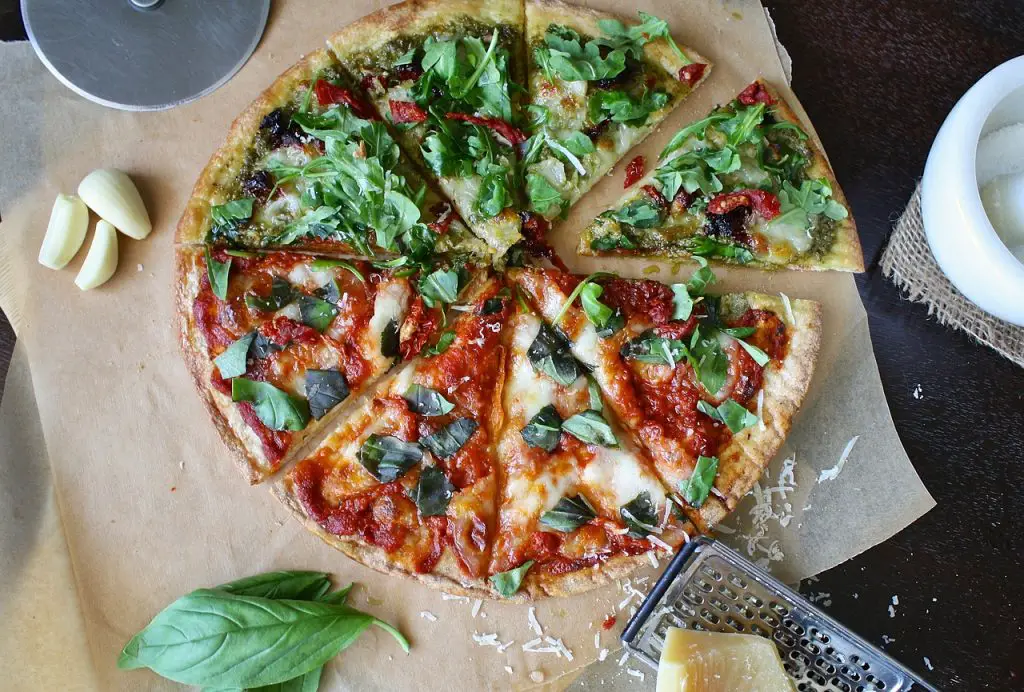Italy, a country renowned for its rich history, art, and culture, is equally celebrated for its delectable cuisine. Italian food has found its way into the hearts and palates of people worldwide. From mouthwatering pasta dishes to sumptuous pizzas and flavorful gelato, Italian cuisine offers a diverse range of flavors and textures. But among this vast culinary landscape, what is the most popular food in Italy? In this article, we will embark on a gastronomic journey through Italy’s diverse regions to uncover the answer to this question.
Pasta: The Undisputed Champion
When one thinks of Italian food, pasta immediately springs to mind. Pasta is an integral part of Italian cuisine and comes in countless shapes and sizes, each with its unique purpose and taste. Spaghetti, penne, fusilli, and tagliatelle are just a few examples of this versatile culinary staple.
One of the most iconic Italian dishes, spaghetti with tomato sauce and meatballs, has made its way into the hearts of people worldwide. Spaghetti is celebrated for its simplicity and deliciousness, often served with a variety of sauces such as marinara, Alfredo, and carbonara.
In addition to spaghetti, other popular pasta dishes include lasagna, ravioli, and fettuccine alfredo. These dishes vary from region to region, showcasing Italy’s culinary diversity. For example, in Emilia-Romagna, you’ll find the renowned lasagna layered with rich béchamel and meaty ragù, while in Rome, you can savor the creamy delight of fettuccine alfredo.
Pizza: Italy’s Gift to the World
Pizza is another Italian culinary masterpiece that has gained global fame. While pizza originated in Naples, Italy, it has evolved into various styles and flavors worldwide. In its homeland, traditional Neapolitan pizza is characterized by its thin, chewy crust, fresh tomato sauce, mozzarella cheese, and fresh basil leaves. The Margherita pizza, with its vibrant red, white, and green colors, is a symbol of Italy itself, named after Queen Margherita of Savoy.
Beyond Naples, different regions in Italy have their own unique pizza styles. Roman pizza, for example, is known for its thin and crispy crust, while Sicilian pizza boasts a thick, fluffy dough and a variety of toppings, often including seafood.
Gelato: The Sweet Treat of Italy
No Italian meal is complete without a sweet ending, and in this department, gelato reigns supreme. Gelato, a type of Italian ice cream, is distinguished by its dense, creamy texture and intense flavor. It is made with a higher ratio of milk to cream than traditional ice cream, giving it a smoother, silkier consistency.
Gelato comes in a multitude of flavors, ranging from classic choices like chocolate, vanilla, and strawberry to more adventurous options like tiramisu, pistachio, and hazelnut. Gelato shops, or “gelaterias,” can be found on virtually every street corner in Italy, and each one prides itself on offering the freshest, most authentic gelato experience.
Risotto: Northern Italy’s Culinary Jewel
While pasta may be the poster child of Italian cuisine, risotto is another beloved dish that holds a special place in the hearts of Italians, particularly in the northern regions. Risotto is a creamy rice dish cooked with broth and flavored with a variety of ingredients such as mushrooms, saffron, seafood, or cheese.
One of the most famous risotto dishes is risotto alla Milanese, flavored with saffron threads that give it a beautiful golden hue. In Venice, you can savor the delightful flavors of seafood risotto, brimming with fresh shrimp, mussels, and clams.
Truffles: The Luxurious Delicacy
Truffles are often referred to as the “diamonds of the kitchen” and are one of Italy’s most sought-after culinary treasures. These rare fungi grow underground in symbiotic relationships with the roots of certain trees, and they are found in several regions across Italy, with Piedmont and Umbria being particularly famous for their truffle production.
The most prized variety is the white truffle, known for its pungent aroma and earthy flavor. Truffles are shaved or grated over dishes like pasta, risotto, and eggs, imparting their unique, aromatic essence to the dishes they adorn. Truffle hunting is a time-honored tradition in Italy, and the thrill of unearthing these culinary gems continues to captivate both locals and visitors.
Prosciutto and Cheese: The Perfect Pair
Italian cuisine is as much about simplicity as it is about flavor. The combination of prosciutto and cheese exemplifies this principle. Prosciutto, or cured ham, is often served thinly sliced and paired with a variety of cheeses, creating a harmonious balance of salty and savory flavors.
One classic pairing is prosciutto di Parma, a renowned Italian ham, with Parmigiano-Reggiano cheese, also known as Parmesan. Another beloved combination is prosciutto crudo with mozzarella, tomatoes, and fresh basil, known as Caprese salad. These pairings highlight the art of Italian antipasti, setting the stage for a delightful meal.
Tiramisu: A Sweet Pick-Me-Up
Tiramisu, which means “pick me up” in Italian, is a beloved dessert that combines layers of espresso-soaked ladyfingers, mascarpone cheese, and cocoa powder. It’s a creamy, coffee-flavored treat that has become a staple in Italian restaurants worldwide.
The origins of tiramisu are a subject of debate, with multiple regions in Italy claiming to be its birthplace. Regardless of its true origins, tiramisu has become a symbol of Italian dessert excellence and is a favorite among both locals and tourists.
Panettone and Pandoro: Holiday Delicacies
During the holiday season, two sweet bread-like cakes take center stage in Italy: panettone and pandoro. These festive treats are cherished traditions that bring families and friends together during Christmas and New Year’s celebrations.
Panettone is a tall, dome-shaped cake filled with candied fruits, raisins, and citrus zest. It has a light, airy texture and a subtly sweet flavor. Pandoro, on the other hand, is a star-shaped cake that is dusted with powdered sugar and has a buttery, rich taste. Both of these desserts are often enjoyed with a glass of spumante, Italy’s sparkling wine, as a delightful way to cap off the holiday season.
Regional Specialties: The Beauty of Diversity
One of the most enchanting aspects of Italian cuisine is its regional diversity. Each of Italy’s twenty regions has its culinary traditions and specialties. For example:
In Tuscany, you’ll find dishes like ribollita (a hearty soup) and bistecca alla Fiorentina (Florentine-style steak).
In Sicily, arancini (stuffed rice balls) and cannoli (pastry tubes filled with sweet ricotta) are popular choices.
In Campania, the birthplace of pizza, you can indulge in the famous Neapolitan margherita pizza.
These regional specialties showcase the incredible variety and depth of Italian cuisine, making it an ever-exciting adventure for food enthusiasts.
The most popular food in Italy is a question with no single answer. Italian cuisine is a symphony of flavors, a tapestry of regional specialties, and a celebration of tradition and innovation. Whether you prefer the comforting embrace of a bowl of pasta, the crispy perfection of a Neapolitan pizza, or the sweet indulgence of gelato, Italy offers something to satisfy every palate.
Italian food has transcended borders and captivated the world with its exquisite taste and timeless appeal. It is a testament to the passion, creativity, and dedication of the Italian people, who have lovingly preserved and shared their culinary heritage with the rest of the world. So, the next time you sit down to enjoy a plate of your favorite Italian dish, remember that you are partaking in a rich and vibrant tradition that has been cherished for centuries – a tradition that continues to evolve and enchant with each delightful bite.
The Italian Dining Experience
To truly appreciate the most popular food in Italy, one must also understand the Italian dining experience, which goes far beyond just the food itself. Italian meals are an affair to be savored, celebrated, and cherished.
Italians take their time when dining, savoring each course and relishing the company of friends and family. A traditional Italian meal consists of multiple courses, starting with antipasti (appetizers), followed by the primo (first course), which often features pasta or risotto. The secondo (second course) typically includes a protein like fish or meat, accompanied by contorni (side dishes) such as vegetables or salads. The meal concludes with dolci (dessert), which could be a decadent tiramisu, a slice of panettone, or a scoop of gelato.
The Italian love for food is deeply rooted in their culture and is a source of pride and identity. Family gatherings and special occasions revolve around the dining table, where generations come together to share stories, laughter, and, of course, delicious food.
The Influence of Italian Food Worldwide
Italian cuisine has had a profound influence on global gastronomy. Italian restaurants can be found in virtually every corner of the world, from bustling metropolises to remote villages. The popularity of dishes like pizza and pasta has led to countless variations and adaptations, creating a global fusion of flavors.
Furthermore, the use of high-quality ingredients and simple, yet effective cooking techniques have inspired chefs and home cooks alike. The emphasis on fresh, seasonal produce, artisanal cheeses, and olive oil has become a standard in modern cooking.
Italian wine and coffee culture also play a significant role in the global culinary scene. Italy is known for its world-class wines, including Chianti, Barolo, and Amarone, which are enjoyed in fine dining establishments worldwide. Additionally, Italian espresso and cappuccino have become an integral part of coffee culture worldwide.
Challenges and Preservation of Italian Food
While Italian cuisine is celebrated for its authenticity and traditional preparation methods, it faces challenges in the modern world. The globalization of food production and the rise of fast food have led to concerns about the preservation of authentic Italian flavors and techniques.
Efforts are being made to protect traditional Italian products through designations like Protected Designation of Origin (PDO) and Protected Geographical Indication (PGI). These certifications ensure that products like Parmigiano-Reggiano cheese and Prosciutto di Parma adhere to specific standards and are produced in their designated regions.
In addition to preserving traditional methods, Italy is also embracing innovation in the culinary world. Young chefs are reimagining classic dishes and techniques, creating a fusion of tradition and modernity that continues to captivate diners worldwide.
The Future of Italian Cuisine
As Italy looks to the future, its culinary landscape remains vibrant and ever-evolving. The country’s food industry continues to adapt to changing tastes and preferences while preserving its rich culinary heritage.
Sustainability and ethical sourcing are becoming increasingly important in Italian cuisine. Locally sourced, organic ingredients are gaining popularity as Italians prioritize environmental and health concerns. Slow Food, a movement founded in Italy, champions these principles by advocating for food that is good, clean, and fair.
Innovation also plays a crucial role in shaping the future of Italian food. The fusion of traditional recipes with contemporary cooking techniques and ingredients is creating exciting new flavors and experiences. Italian chefs are pushing boundaries and experimenting with unexpected combinations, all while respecting the core principles of simplicity and quality.
Italian cuisine is a culinary journey that takes us through the heart and soul of a nation deeply passionate about food. From the comforting embrace of a bowl of pasta to the complex flavors of truffles, Italian food offers a diverse and enchanting range of dishes that have captured the hearts and taste buds of people around the world.
While there may not be a single “most popular” food in Italy, the country’s culinary heritage is a tapestry of flavors, each region weaving its unique story and contributions. Italian food is a celebration of tradition, innovation, and the joy of sharing a meal with loved ones.
So, the next time you sit down to enjoy a plate of your favorite Italian dish, remember that you are not just indulging in a delicious meal but partaking in a centuries-old tradition that continues to evolve and enchant. Italian cuisine is a gift to the world, a testament to the Italian people’s love for life, family, and the simple pleasures found in a good meal. Buon appetito!




